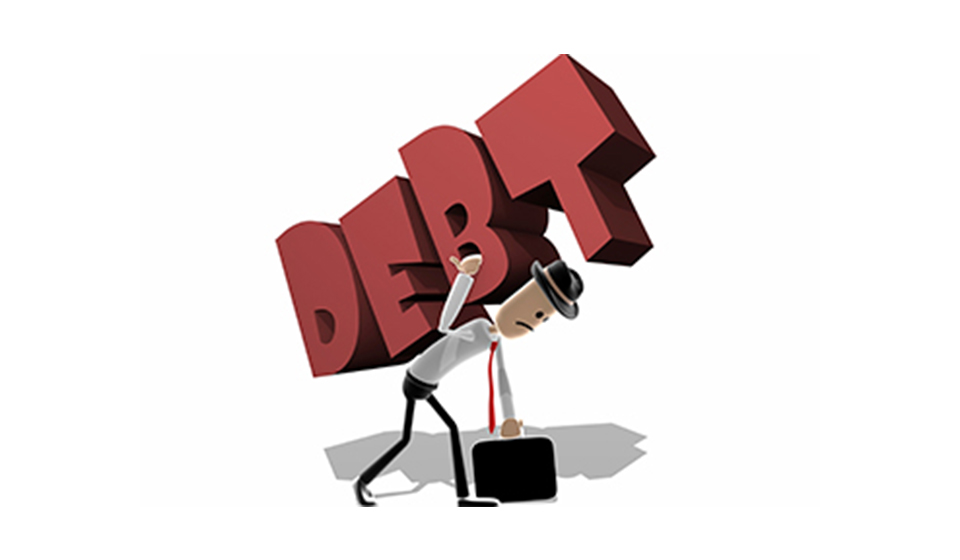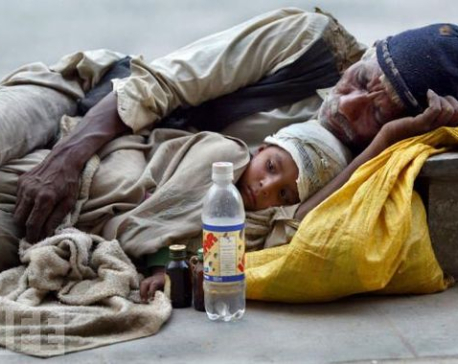
OR
Editorial
Danger Ahead, Caution Needed!
Published On: March 8, 2023 07:40 AM NPT By: Republica | @RepublicaNepal

The rapidly growing public debt in Nepal is a cause for concern, and officials’ assurances that the country can handle public debt up to 53 percent of the country’s GDP should not be taken lightly. The government has been relying on loans to meet the regular expenditure of the country, which is not a good sign, and if not addressed, could lead to economic doom for Nepal.
According to the Public Debt Management Office (PDMO), the government’s debt liability has crossed Rs 2 trillion by mid-February of the current fiscal year. Public debt has increased by about Rs 32 billion during the first seven months of the current fiscal year. The debt of the government has increased to Rs 2.0433 trillion by mid-February. Until last fiscal year, the debt was Rs 2.0133 trillion.
One reason for the increase in debt is that the government took a lot of debt for reconstruction. The country is burdened with debt because there is a compulsion to proceed with big infrastructure projects for the development of the country. Loans should be taken for those schemes when the internal resources are insufficient. However, the government is unable to increase revenue collection, so it has been formulating the budget by considering foreign and domestic loans as major sources. As the source of revenue is decreasing with the increase in the size of the budget, the volume of debt is also increasing.
Experts say that as the burden of public debt increases, more challenges will be added to the country's economy. The officials of the PDMO say that the debt can be sustained up to 53 percent of the GDP. However, this should not be taken as a guarantee. A former executive director of Nepal Rastra Bank, Dr Gopal Prasad Bhatta has published a research paper titled ‘Estimating Optimum Growth-Maximizing Public Debt Threshold for Nepal’, where he argues that the public debt should be 33 percent of the GDP. In other words, the optimum public debt to GDP ratio in the context of Nepal is 33 percent. However, as of the last fiscal year (FY 2021/22), this was almost 41.47 percent where the external debt to GDP ratio was 21.14 percent and the internal debt to GDP ratio 20.32 percent.
The high borrowing by the government would be justified if it contributed positively to the expansion of the country’s GDP. However, the government is currently struggling to meet current expenses due to a decline in revenue collection. When the government prepares the budget, it sets the target for revenue collection, foreign aid, internal and external debt. When the government prepared the budget for the current fiscal year, it set a target of collecting 69.13 percent revenue in addition to raising 14.27 percent domestic debt, 13.50 percent foreign loan, and receiving three percent foreign grant. This shows that 27.77 percent of the total budget of the government is internal and external debt. Through the half-yearly review, the government has revised the estimates and downsized the budget to Rs 1.55 trillion for the current year.
It appears safe to say that the adoption of federalism in Nepal has led to an increase in recurrent expenditures for the government. The country has to spend extra on creating subnational governments such as the provinces, which require the establishment of new administrative structures, offices, and personnel to manage and govern these subnational entities. This has resulted in increased recurrent expenditures, such as salaries for new employees, office rent, and operational expenses for the newly established administrative bodies. Additionally, the distribution of resources and responsibilities between the central government and provincial governments has also led to duplication of services and increased expenses. So, apparently the country has to beg and borrow not only for the central government but also for the provincial and local governments. However, as the government’s ability to mobilize revenue has not increased accordingly, this could be challenging for countries like Nepal that have limited financial resources.
It seems there are economic dangers ahead. And it is evident that Nepal needs to act prudently to avoid the risks associated with high levels of public debt, which seem to be increasing beyond what the country can comfortably manage. So, the economic perils looming ahead are grave and cannot be ignored. Nepal must act wisely and with urgency to avert the mounting risks posed by soaring levels of public debt that could soon exceed the country's capacity to manage. Failure to take decisive action, such as imposing spending controls and implementing effective debt management strategies, could force the government to impose exorbitant taxes on the citizens as a last resort to tackle the escalating public debt crisis. That would be unfortunate and should be avoided at all costs.
You May Like This

Nepal, India officials holding meeting on supply of petroleum products, gas
KATHMANDU, April 21: The government has decided to convene the fourth meeting of the joint taskforce of Nepal and India... Read More...

The Poor and Politics in Nepal: Some Random Thoughts
It's a good thing that we have a wealth of "isms" – communism, Marxism, Leninism, Maoism, socialism, liberalism, capitalism etc... Read More...

State Control over Media in Nepal
The government is always looking for opportunities to control the media. The stakeholders concerned have to organize protests from time... Read More...










Just In
- Japanese envoy calls on Minister Bhattarai, discusses further enhancing exchange through education between Japan and Nepal
- Heavy rainfall likely in Bagmati and Sudurpaschim provinces
- Bangladesh protest leaders taken from hospital by police
- Challenges Confronting the New Coalition
- NRB introduces cautiously flexible measures to address ongoing slowdown in various economic sectors
- Forced Covid-19 cremations: is it too late for redemption?
- NRB to provide collateral-free loans to foreign employment seekers
- NEB to publish Grade 12 results next week








Leave A Comment